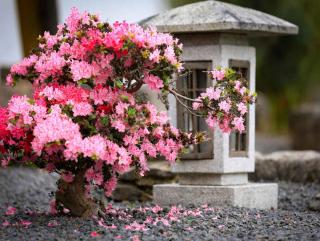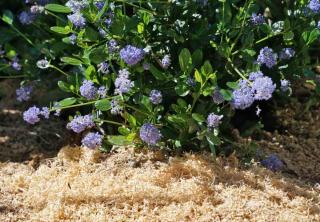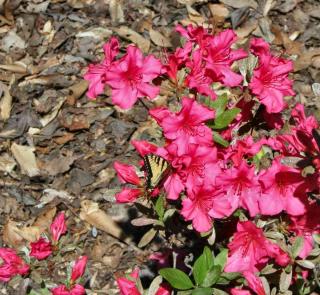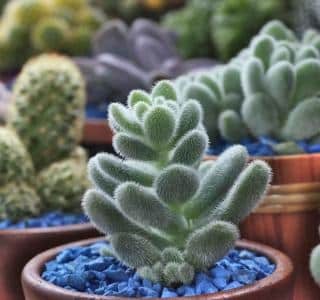

There is a mind-numbing amount of mulches on the market, and it’s never simple to find out which one is best for where you live and the plants you want to mulch.
That’s why we’ve prepared a detailed summary here, with our recommended options and even a few nice tips on the side.
Most types of mulch are perfectly suitable for protecting and decorating flowerbeds, nonetheless our preference is clearly either natural or colored wood chips. Natural woodchips have a lighter color, great to bring light to the garden, even in darker corners. Colored ones are amazing to have fun with your landscaping, and they really make all that greenery stand out! From the vast array of colors already available on the market, our vote goes to red hues which naturally fit and respond to the green of leaves.
For a more authentic and noble appearance, bark mulch, especially that with somewhat larger slabs, really strikes a chord. Lastly, for a Zen garden atmosphere, slate mulch will be your best ally! It has a light, metallic color when dry, turns dark gray (nearly black) when wet, and will in both cases render that light Japanese touch to your garden bed. Pair slate mulch with hydrangea for a stunning effect.
First of our little tips: did you know that the alumina compound that leaches of of slate will give your hydrangea a rare blue color?

Another tip you might not be aware of: what if you tried mulching around your trees? It’ll transform your garden! 
If you’re just starting out along the quest for the perfect mulch, the best place to start is always the vegetable patch. That’s where any benefits will be the most useful. 

Typically, these are sold in smaller amounts in garden stores, which is great if you want to combine textures and colors without having to buy a truckload of each. Our favorite is the small-scaled mini-bark chips, which is perfect for all Mediterranean-type plants and citrus pots, and Copolight®, a light, pale-colored mineral mulch that will light your pots up and bring a touch of minimalism to your deck or balcony!